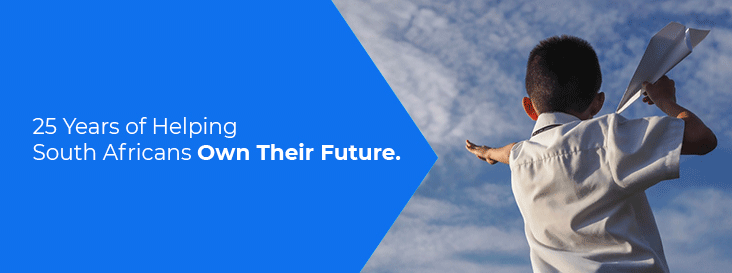AngloGold pushes deeper into the US market with another acquisition (JSE: ANG)
They are acquiring Augusta Gold in a R2 billion deal
AngloGold recently moved its primary listing from the JSE to the New York Stock Exchange (NYSE). It remains listed on the JSE so that South African shareholders can continue to invest in the stock without any difficulties, but having a primary listing in the US is a clear sign of intent around global growth ambitions.
Speaking of growth, the company has announced another acquisition in the US market. They have agreed to acquire Augusta Gold in a deal worth nearly R2 billion. Augusta Gold is listed in Toronto, so the price is expressed in Canadian dollars. They are paying C$1.70 per share, a premium of 28% to the closing price on 15 July and 37% to the 20-day VWAP. The purchase price is being settled in cash.
The appeal here is that Augusta Gold’s assets are in the Beatty District in Nevada. They are also adjacent to AngloGold’s existing assets in the area, so they are consolidating their interests in that space and adding to their mineral resources.
Ultimately, by seeking gold assets in a region like the US, AngloGold is hoping to increase its valuation. Whether we like it or not, investors are more likely to pay up for gold assets in the US than in South Africa, as the regions have very different risk premiums.
Unless Trump starts trying to fire every Fed chair who doesn’t want to drop interest rates, that is.
A huge upswing in AUM at Coronation (JSE: CML)
The markets have thrown them a bone
The story at Coronation in recent times has been one of disappointing flows and management blaming things like South Africa’s poor savings culture, while competitors with advice-led businesses go out there and hunt for assets with success.
The good news for Coronation shareholders is that although I doubt the situation with flows has changed much, recent market performance has led to a substantial jump in assets under management (AUM), the basis upon which Coronation earns a living.
AUM was R737 billion as at June 2025. Coronation never ever gives comparable numbers in the same announcement (even when they’ve done well), so we have to go digging through SENS to find them. The June 2024 number was R632 billion, so they are 16.6% higher over 12 months. The March 2025 number was R676 billion, so they are 9% higher over three months.
Now, if only the trend around inflows would change! But I doubt that will happen without management investing in distribution, something they seem unwilling or unable to do.
Rough news for investors in Mpact: profits have moved sharply lower (JSE: MPT)
The plastics business dragged them down
Mpact has released a trading statement dealing with the six months to June 2025 and I’m afraid it’s not for good reasons. Brace yourself: HEPS from continuing operations is expected to be between 18.2% and 28.0% lower. And for total operations, the expected drop is between 30.8% and 39.1%. Ouch!
The paper business achieved revenue growth of 7% thanks to higher containerboard sales volumes in both the local and export markets, partially offset by lower cartonboard and corrugated sales volumes due to weak demand. But even this growth wasn’t good enough, as cost and margin pressures drove a decrease in operating profit.
The plastics business suffered a drop in revenue of 15%, with FMCG Wadeville struggling to replace volumes lost after expiry of two contracts with a major customer. There was also seasonal pressure in Bines & Crates, which should ease in the second half. Although Mpact doesn’t explicitly say it, profit is surely down significantly in this segment.
With group EBITDA down by 15% and underlying operating profit by 26%, HEPS never really stood a chance. The only highlight here is that net debt has reduced from R3.23 billion to R2.985 billion.
Detailed results are due for release on 4 August, at which point investors will know the full extent of the pain. The Mpact share price has lost 17% this year.
Sales are up at Richemont – but not by much (JSE: CFR)
They refer to 3% growth as a “solid start” to the year
The quarter ended June 2025 is the first quarter of Richemont’s financial year. They got off to a positive start at least, with group sales up 3% as reported and 6% in constant currency terms. Hardly a rocket to the moon, but in the green.
The trends in the underlying segments is fascinating. The Jewellery Maisons were up 11% in constant currency, while Specialist Watchmakers fell 7%. The “Other” bucket (which is nearly as big as Specialist Watchmakers these days) fell 1% in constant currency.
The regional story is also interesting. Asia Pacific finally bottomed out in terms of flat constant currency sales and a decrease of 4% as reported Although there was a 7% decline in China, Hong Kong and Macau, other Asia Pacific markets picked up that slack. The next largest segment is Americas, up 17% in constant currency and 10% as reported. Then we get Europe, up 11% (on both metrics as the reporting currency is the euro). Japan had a rough time vs. a very high base, with sales down 15% in constant currency and 13% as reported. Finally, Middle East & Africa was up 17% as reported and 11% in constant currency, with the United Arab Emirates as the unsurprising bright spot there.
As you can see, the currency is making quite a difference. A world of dollar weakness and euro strength isn’t ideal for Richemont.
On the balance sheet, net cash was €7.4 billion, only slightly up from €7.3 billion due to the YNAP transaction that was completed in April 2025. They’ve finally sold that messy thing to Mytheresa, although they had to put in more cash to make that happen and they now have a 33% stake in Mytheresa.
Richemont’s share price is up roughly 20% year-to-date.
Nibbles:
- Director dealings:
- In further egg on the faces of the Assura (JSE: AHR) board regarding the offer they chose to back, the letters from the employee representative show that employees are more concerned about the merger with Primary Health Properties (JSE: PHP) than KKR and Stonepeak. That’s not surprising, as a merger is far more likely to lead to job losses. Tell me again about how that merger is likely to be a net positive for investors vs. just taking a cash offer?
- Visual International (JSE: VIS) released results for the year ended February 2025. This is a penny stock (it closed 50% higher at R0.03, mainly because that’s the only increment higher than the previous close of R0.02), so it only gets a mention down here. Beware: they are looking to raise capital through a bookbuild that they will propose at the AGM, so dilution is coming. The company is so small that revenue was just R1.8 million, while the loss before tax was R2.3 million. HEPS was 0.39 cents per share. There are also a whole bunch of related party balances going on here. It needs a lot of cleaning up.
- Numeral (JSE: XII) released numbers for the quarter ended May 2025. This period includes the 51% interest in Cryo-Save South Africa, as well as the 51% in Longevity Lab and a short period of ownership of the 40% in Isopharm. In other words, the comparable numbers aren’t useful. Revenue was $543k and net profit after tax was $75.7k, so this obscure Mauritian structure is now generating positive earnings. There’s very little trade in this stock and it remains a penny stock of note (currently trading at R0.02), but maybe they will actually manage to turn it into something.
- Supermarket Income REIT (JSE: SRI) has completed the transfer of its listing from the closed-end investment funds category to the equity shares category on the London market. This may sound like just a housekeeping thing, but it makes quite a difference in terms of index tracking funds and the mandates of institutional investors.
- In the incredibly unlikely event that you’re a shareholder in Globe Trade Centre (JSE: GTC), you’ll be interested to know that the company has exercised a call option to acquire a residential portfolio. They are funding this with a combination of own cash resources and a loan to the company.




